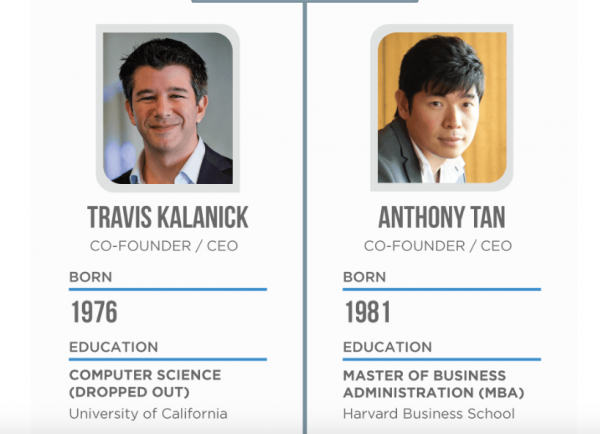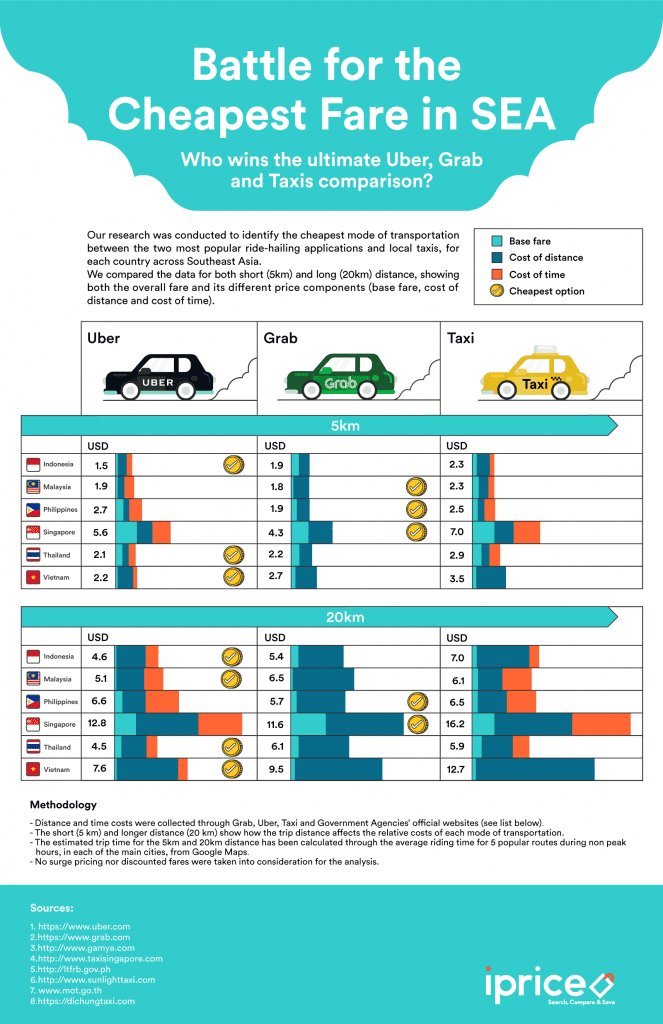From the very beginning, the business model of the ride-hailing app, as pioneered by Uber, was poised to throw the taxi industry into upheaval due to its focus on customer experience. The model shaves away plenty of the unpleasant friction inherent in the traditional method of taxi-hailing and updated it for the tech-savvy generation. In Southeast Asia, however, Uber’s reach and popularity is tenuous, facing local competitor Grab.
Lessons from Uber in Customer Experience
Valued at USD62.5 billion, Uber is a giant in an industry of its own making. Plenty of its success is derived from word-of-mouth marketing, a method of advertising frequently proven to be more effective than traditional advertising platforms. However, word of mouth only works with excellent customer service.
Uber ensured this by addressing the dissatisfactions inherent in the traditional taxi service. Uber’s app allows customers to locate and order nearby taxis in a timely manner. It also has a ratings system for both passenger and taxi driver, thus allowing and supporting a two-way customer centricity.
Since Uber’s rating system determines the quality of future transactions, driver and passenger would be more inclined to provide a good service to one another, thus perpetuating a cycle of satisfactory customer experience. While this model has its problems, it is nevertheless efficient in its self-policing. As a result, it has been adopted by plenty of other rival companies such as Lyft, Hail, and most notably in Southeast Asia, Grab.
Since its inception in 2012, Grab has grown to be one of the most popular transport apps in the Southeast Asian region. The question now isn’t whether Grab is a worthy challenger of Uber’s title but whether Grab is capable of supplanting Uber as the king of ride-hailing apps in the region altogether. Like Uber, Grab has adopted a strategy of focusing on customer experience but it has gone a step further by introducing new avenues of service to cater to the specific needs of its clientele. Such initiatives include GrabHitch, GrabBike and even Grab Yee Sang.

Localisation is the winning strategy of Grab’s Customer Experience
The GrabBike initiative was first launched in 2014 in Ho Chi Minh City, Vietnam. Its continuing success is owed to the city’s underdeveloped public transportation system, which has led to a dependence on motorcycle-taxis called xe ôm. GrabBike takes advantage of the customer’s frustration with the unscrupulous prices set by xe ôm drivers and the general preference for xe ôm over car taxis for their ability to cut through grid-lock traffic. Grab mimics Uber in implementing a rating system for its drivers and then goes one step further by offering a fixed fare for rides. GrabBike proved to be so popular that it has since been launched in Hanoi as well as Bangkok, Thailand and Jakarta, Indonesia with popular forums like TripAdvisor advocating for tourists to use their service over traditional motorcycle-taxis.
Similarly, GrabHitch addresses the problem of crowded traffic in Southeast Asian cities by offering a carpool service. GrabHitch Singapore, in particular, provides the option of an easy semi-public transport for the 400,000 people who commute between Johor Bahru, Malaysia and Singapore daily. This GrabHitch service takes advantage of the fact that over 80 percent of the aforementioned 400,000 are willing to carpool. This initiative also holds itself up as an answer to the Singaporean government’s worry over increasing traffic congestion in the small country.
The launch of GrabBike and GrabHitch demonstrates a strong comprehension of customer experience in the local markets. However, it’s not all about seeing a need and meeting it. It’s also about brand image. During the recent Chinese New Year festivities, Grab offered a delivery service for yee sang, a dish traditionally consumed in Malaysia and Singapore. This service capitalised on the probability that most restaurants serving yee sang will be fully booked during the festive season and showed a degree of involvement with the local culture absent in Uber’s initiatives.

“We see plenty of opportunity in Southeast Asia,”
said Arul Kumaravel, Grab’s VP of engineering in an interview with The Verge.
“We are focused on services in our local markets where we have familiarity with local needs.”
For Grab, South-East Asia’s crammed cities are not “just another” market.“This is our home.”Said Anthony Tan- Grab CEO and co-founder on Economist
Therein lies the advantage Grab currently has over Uber. Grab is focusing on bettering their product for customers in its existing markets while Uber’s goals beyond its domestic borders lie in expansion. Uber has been trying to penetrate the Indian and Chinese market and has only pulled out of China after losing USD1.2 billion in the previous fiscal year.
Convenience is King
To put it simply, Grab has the home advantage and plans to push that it further. Unlike Uber, it has no plans of expansion in a saturated market, hence its decision to refrain from launching in North America, which is already in a stranglehold between Uber and Lyft. Yet it would be a mistake to discount Uber this early in the game. It has already introduced its own motorcycle-taxi and carpoolservices, UberMoto and UberPool respectively.
Moreover, a recent poll shows that Uber’s popularity is already on the rise; a growth that will continue once it addresses its vulnerabilities in the Southeast Asian market. Following current withdrawal from China, Uber can free up resource to invest further on Grab’s territories. Uber’s mapping project in Singapore, which still unmet by its local competitor, revealed the company’s ambition in dominating the region.

Customers have proven to be fickle in terms of brand loyalty, preferring neither Uber nor Grab specifically, but whichever service is cheaper at the time of booking. Research by Price Comparison site iPrice revealed that Uber is champion in Vietnam, Thailand, Indonesia in the battle for cheapest fare. For Southeast Asian customers, convenience is king and so Uber might yet win. Retaining customer loyalty will be the next quest for both Grab and Uber in their enduring battle.



